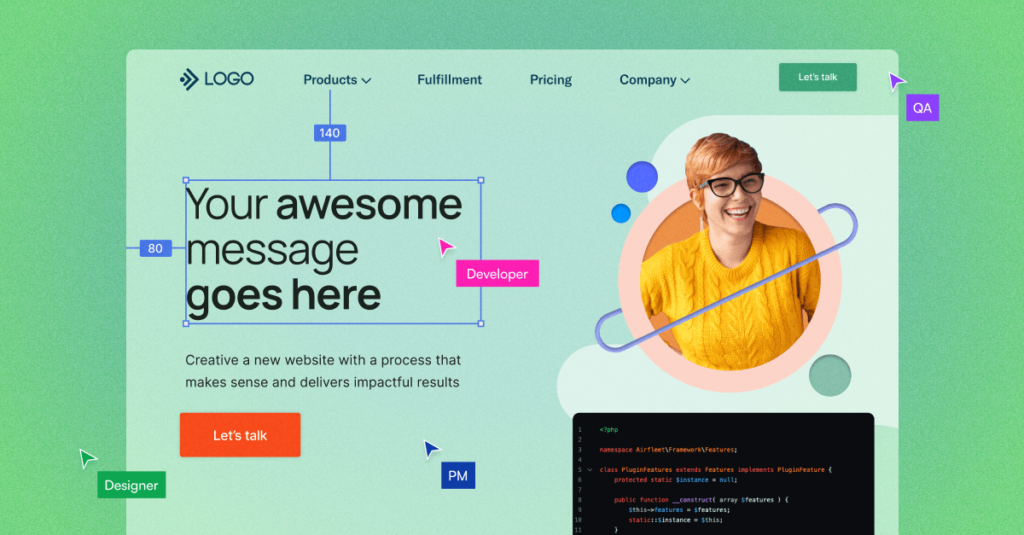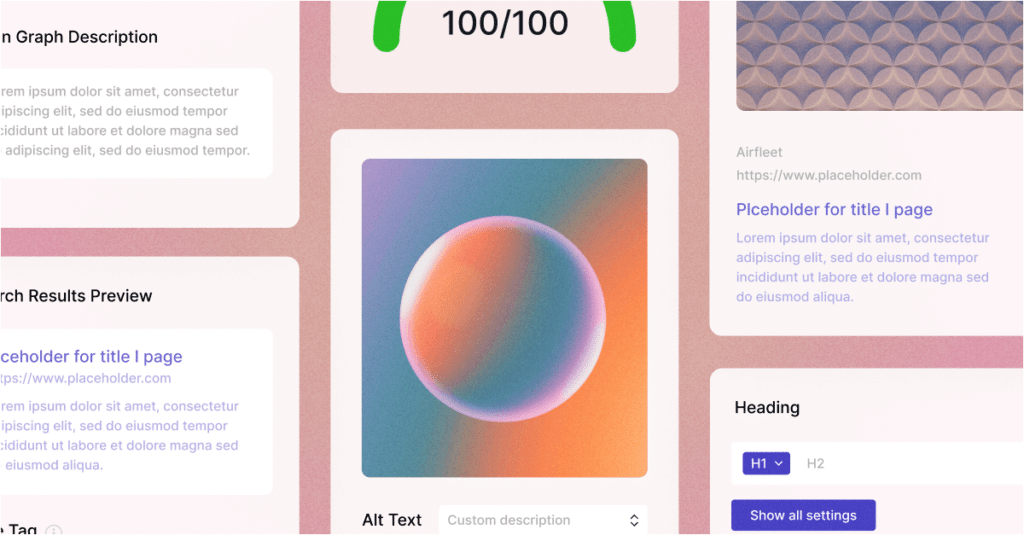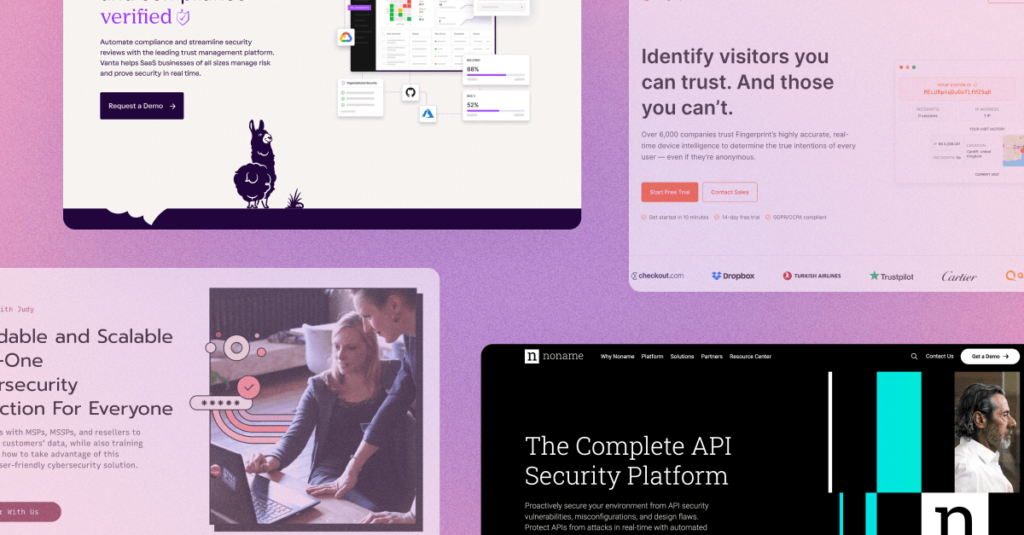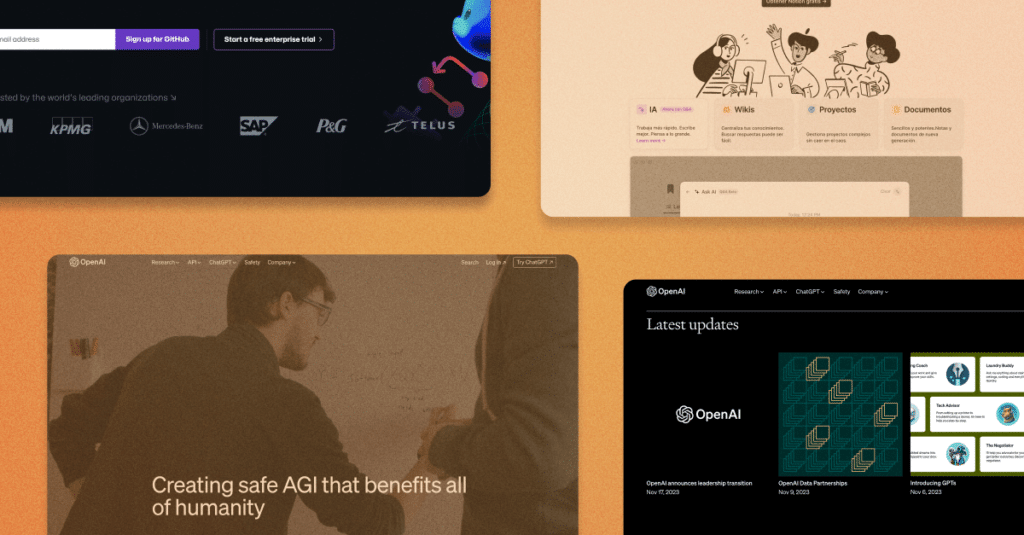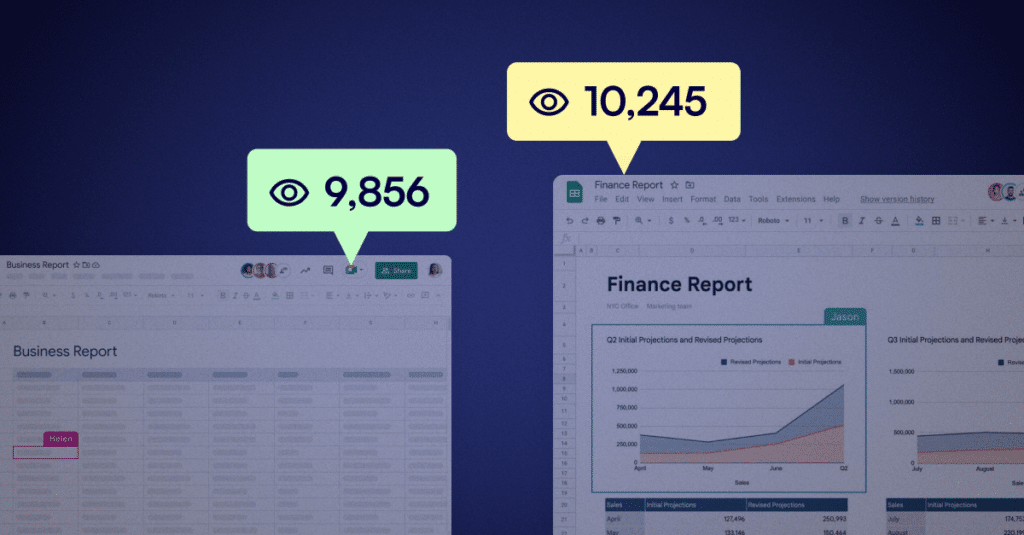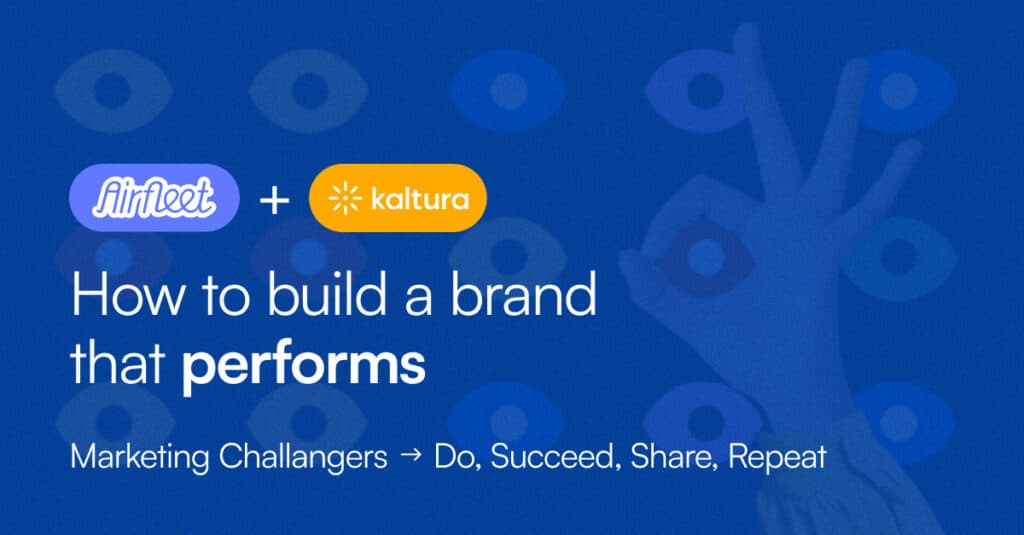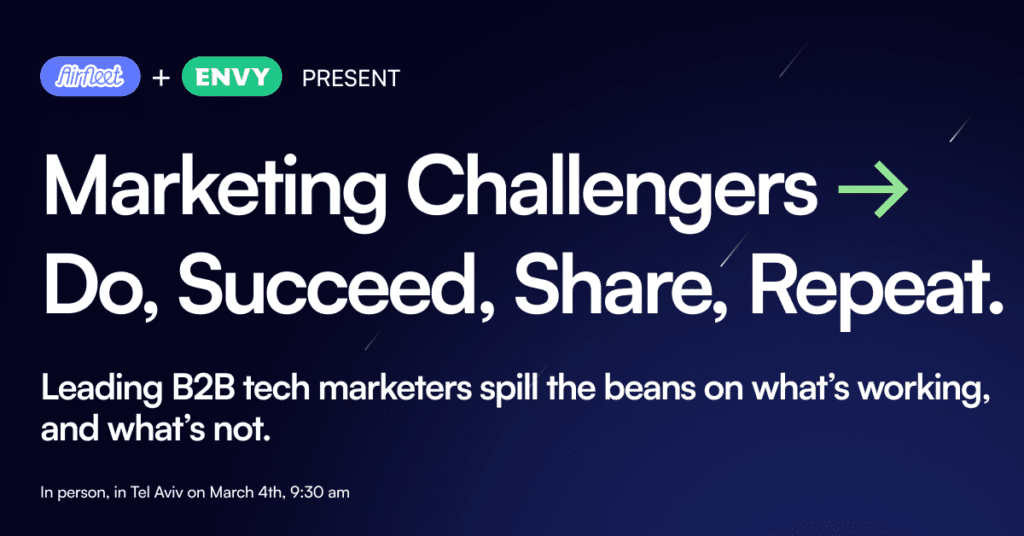The Airfleet Debrief: A Better Way to ABM
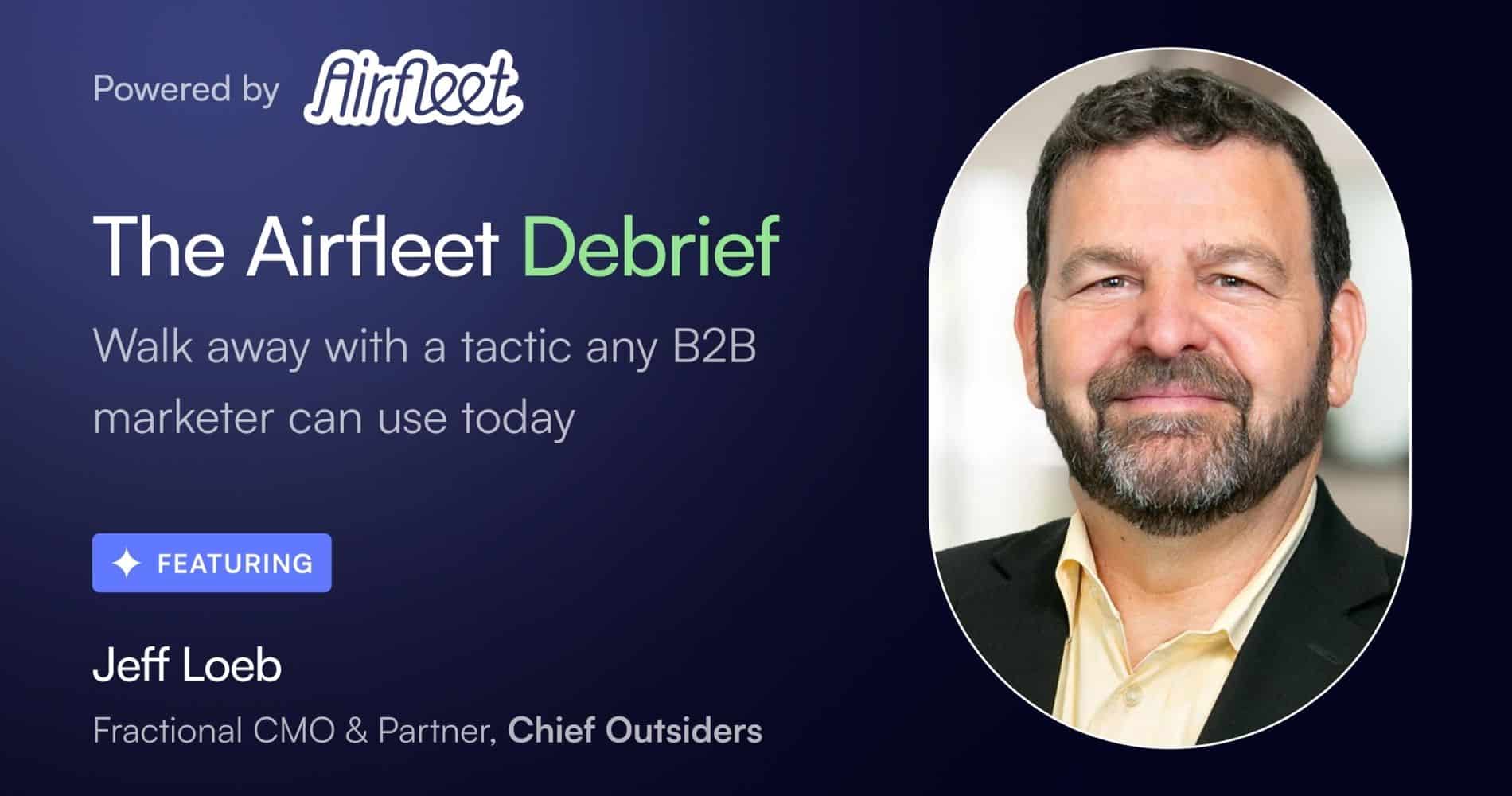
The Airfleet Debrief is a series that challenges marketing experts to teach B2B marketers something they can use in 15 minutes or less. Jeff Loeb, Fractional CMO and Partner at Chief Outsiders, is a renowned expert on Account-Based Marketing (ABM). He shared some new technical tricks he’s recently incorporated into his targeting strategy.
ABM often dies on the vine before execution. The points for failure for most teams? A lack of:
- Alignment between sales and marketing about who to target
AND/OR
- Alignment between sales and marketing on how to execute
Jeff Loeb uses a similar exercise as Doug Bell (which you can read about or watch here) to define the ideal customer profile (ICP) and gain buy-in from sales. Once he gets agreement on the description of which companies and personas to target, he prefers to kick off an ABM program with a pilot targeting a small group of accounts.
A pilot allows everyone to (quickly) learn how to adjust the individual tactics within the initiative and convince the sales team that participation is worth the effort.
If you’re having trouble getting buy-in and limiting your sales team to a handful of target accounts, you’ll want to learn Jeff’s method for selecting a more engaged group for the first few waves.
Let’s dig in to learn why and how!
Understanding and leveraging first-party intent data
Let’s be honest about why ABM is so hard to sell to a salesperson. If a salesperson needs to sell to five accounts in a single quarter to hit their number and they’re limited to a list of 25 accounts to co-market—with the knowledge that 5% are currently in-market for the company’s product—the math does not favor them hitting their quota!
This is why salespeople are renowned for trying to sneak in an extra 100+ accounts into their target list or simply refusing to participate in their share of the outreach.
But what if marketers used intent signals to target accounts that are much more likely to be in-market for your product?
Targeting 25 accounts already engaging with your company website is a much different stance to take with sales than selecting even the most perfectly curated list of unengaged ICP accounts. Although there is a ton of utility in targeting ICP accounts not yet in-market, beginning a pilot with highly engaged accounts or narrowing your sales outreach to focus on the highly engaged accounts can help your sales team see results much faster.
We would be remiss if we didn’t point out that there are many considerations to consider before implementing IP de-anonymization. How much data are you planning to deanonymize? How will you store it? Are you collecting enough data to require consent? You should review these questions with your legal team or existing GDPR policy.
If you are located in the United States, you have more leeway, particularly if you’re only deanonymizing the company the person works for and not the individual visiting your website (we are not lawyers, so please don’t just take our word for it). We also need to point out that with the prevalence of remote work in B2B SaaS, company de-anonymization is often the most detail you will get out of your tools.
Provided de-anonymization is allowed – at least to some extent – classifying the different kinds of pages on your website can be extremely helpful when trying to measure intent. For example, if you have lower funnel assets, you may put them at a similar intent level as visits to your solutions pages and case studies.
If we were to classify visits to our website, it may look something like the following:
- Demo pages & free trials: High
- Competitor comparison pages: High
- Solutions pages: Moderate
- Case studies: Moderate
- Integrations & technical partners: Moderate
- Careers: None
- Become a partner page: None
- All other pages: Little Intent
You may be surprised we didn’t rank the “About Airfleet” page types higher. These pages are usually ranked second in website visits to the Homepage and do not necessarily demonstrate intent. It may be a hint that you need to do a better job of explaining what exactly it is your company does on the Homepage if your path analysis shows consistent traffic from Home -> About <Company>.
We also recommend segmenting your test accounts, career page visits, and affiliated accounts (like technical partners) so they are completely deprioritized. Knowing who to ignore is almost as important as knowing who is engaged!
If your company can’t find a way to deanonymize your website visitors, there’s still a huge benefit to creating segments like we outlined above to refine your Google Ads strategy and get more out of your GA4 data.
Expanding the data toolkit beyond your website
You’re probably wondering why we haven’t brought up intent data providers yet. Third-party data can be a useful tool when developing a target account list, particularly when you have a talented analyst on your team with the time necessary to narrow in on intent signals most likely to indicate that your target account is actually in-market.
For example, intent providers like Bombora, 6sense, Propensity, Cognism, Demandbase, and Lead Forensics often provide companies with either a wide range of signals or are very cagey about which signals are used for their intent scoring. When you can get access to descriptive signal data, you can compare that data to your sales information and narrow down the signals to a short list that is much more effective at flagging high-intent buyers.
Peer review tools, such as G2, Capterra, and TrustRadius, also offer intent data. G2 directly integrates with Salesforce, allows customers to choose the topics they receive, and even displays data about activity on key competitor pages.
It’s hard to convince us that third-party signals are more useful than collecting the companies already visiting key pages on your website, but they are a viable alternative if you have the right resources to maximize their value.
Marketers without access to robust data solutions and analysts will receive much less benefit from these tools. We have heard a lot of horror stories, particularly when it comes to convincing the sales team that the intent data is useful.
Intent should also be used to measure ABM success
Intent data—both first-party and third-party—is very useful after you launch your ABM initiative. This is true even if you don’t use the data to narrow your target list!
Once your top-of-funnel ads launch, first-party engagement data from your website can validate whether your ads are creating traffic and key events on your website. This enables you to track who may be in the early stages of the funnel without needing to wait for form fills or interaction with other marketing assets.
We recommend setting up segments or audience tracking by page type (outlined above) and mirroring that data when you export website interactions to a data warehouse or other tool.
If you set up GA4 measurements just right (Alistair Fairweather explained some of the steps we run through for our clients here), you can track which CTAs your targets are engaging with and where on a given page they are engaging. We find this far more useful than a simple “yes/no” answer for whether or not they visited your website.
Sharing this data with your sales team can help keep them excited about the program and engaged in outreach, creating a win-win for marketers piloting an ABM program or advocating for an existing ABM program. Leveraging this data can also help marketers capitalize on traction with target accounts by refining lead target lists and creating personalized content on the website.
While marketing to target accounts that aren’t in-market is crucial to remain top-of-mind when these accounts do start a buying cycle, leveraging intent data can help marketers prove a concept with sales and show them the benefits of ABM without having to wait quite so long. If you already have sales buy-in, we hope you’ve found our tips and tricks for using intent data to demonstrate ABM effectiveness advantageously!
If you want to read more about when ABM is appropriate and how to execute an ABM initiative, check out Jeff Loeb’s guide, written in collaboration with Carol Eversen, by clicking here.
